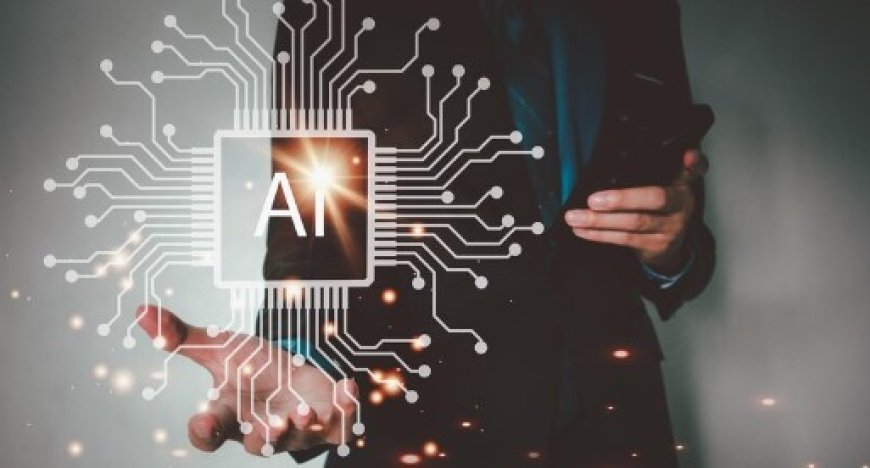Exploring the core AI components
Discover the essential AI components, including machine learning, neural networks, and decision-making systems, for a foundational understanding.

Artificial Intelligence, or AI, is much like a toolkit filled with various tools, each serving a specific function, yet all working together to build something incredible. At its core, AI involves a few critical components: machine learning algorithms, neural networks, data processing units, and decision-making systems. These elements allow AI to learn from information, predict outcomes, and adjust to new challenges. Understanding these components sheds light on AI's growing role across different sectors, such as healthcare, finance, and customer service. By familiarizing ourselves with the basics of AI, we're better equipped to leverage its benefits, enhance efficiency, and navigate the digital world more effectively. This knowledge demystifies AI and empowers us to use it more consciously and innovatively.
Understanding AI Components
Artificial intelligence, or AI, is about making machines smart like humans, allowing them to perform tasks that typically require human intelligence. These tasks include understanding language, recognizing patterns, making decisions, and solving problems.
The core components of AI include Machine Learning, Natural Language Processing (NLP), Computer Vision, and Robotics.
a. Machine learning involves training machines to learn from data without explicit programming. It allows AI systems to recognize patterns, make predictions, and improve their performance over time. For example, it enables recommendation systems to suggest products based on past preferences.
b. Natural language processing focuses on enabling machines to understand and interpret human language. It allows AI systems to comprehend text, speech, and even emotions, enabling applications like virtual assistants and language translation tools.
c. Computer Vision enables machines to interpret and understand visual information from the environment. It allows AI systems to analyze images, recognize objects, and understand gestures. Applications include facial recognition, autonomous vehicles, and medical image analysis.
d. Robotics involves creating machines capable of performing tasks autonomously or semi-autonomously. It combines AI with mechanical engineering to design robots that can interact with the physical world. Robotics applications range from manufacturing and agriculture to healthcare and space exploration.
Each component plays a crucial role in AI development and applications. Machine learning forms the backbone of AI systems, enabling them to learn from and adapt to data. Natural language processing enables communication between humans and machines, facilitating interaction and understanding. Computer vision allows AI systems to perceive and interpret visual information, expanding their capabilities to interact with the world. Robotics brings AI into the physical realm, enabling machines to perform tasks traditionally done by humans and enhancing efficiency and safety.
Machine Learning
Machine learning is a branch of Artificial Intelligence (AI) that teaches machines to learn from data and improve their performance over time without being explicitly programmed.
There are three main types of machine learning:
a. Supervised Learning: In this type, machines learn from labeled data, such as images tagged with descriptions. For example, a supervised learning algorithm can be trained on labeled images of cats and dogs to recognize them in new images.
b. Unsupervised Learning: Here, machines uncover patterns in unlabeled data, like grouping similar customer behaviors in market segmentation. An example could be clustering similar shopping patterns to identify customer segments.
c. Reinforcement Learning: This type involves learning through trial and error, with machines receiving feedback on actions taken in an environment. For instance, a reinforcement learning algorithm can learn to play a game by trying different moves and receiving rewards or penalties based on its performance.
Machine learning finds applications across various domains. In healthcare, it aids in diagnosing diseases by analyzing patient data and medical images. In finance, it predicts market trends to inform investment decisions. Recommendation systems in e-commerce use it to personalize product recommendations based on user preferences.
Natural Language Processing (NLP)
Natural Language Processing (NLP) is a branch of Artificial Intelligence (AI) that focuses on enabling computers to understand, interpret, and generate human language in a way that is both meaningful and useful. NLP teaches computers to understand and work with human language, allowing them to analyze text, extract meaning, and generate responses like humans do.
Techniques and algorithms used in NLP robots include:
-
Tokenization: Breaking down text into smaller units, such as words or sentences, to analyze them individually.
-
Part-of-Speech Tagging: Identifying the grammatical parts of speech (e.g., noun, verb, adjective) in a sentence.
-
Named Entity Recognition (NER): Identifying and categorizing named entities such as names of people, organizations, and locations in text.
-
Sentiment Analysis: Determining the sentiment or opinion expressed in a text, such as whether it is positive, negative, or neutral.
-
Machine Translation: Translating text from one language to another using algorithms and models trained on large datasets of translated text.
NLP finds applications in various fields:
-
Text Analysis: NLP is used to analyze large volumes of text data, such as social media posts, customer reviews, and news articles, to extract insights and trends.
-
Chatbots: NLP powers chatbots and virtual assistants, allowing them to understand user queries, provide relevant information, and engage in natural-language conversations.
-
Language Translation: NLP enables automated language translation services, allowing users to translate text between different languages quickly and accurately.
Computer Vision
Computer Vision is a field of Artificial Intelligence (AI) that enables computers to understand and interpret visual information from the real world, much like humans do with their eyes.
Techniques and algorithms used in computer vision include:
-
Image Classification: Identifying and categorizing objects or scenes within an image.
-
Object Detection: Locating and identifying multiple objects within an image, often with bounding boxes.
-
Image Segmentation: Dividing an image into meaningful segments or regions based on similarities.
-
Feature Extraction: Identifying key features or patterns within images to aid in recognition and analysis.
Computer vision finds applications in various fields:
-
Image Recognition: Identifying objects, people, or scenes within images, such as faces in photographs.
-
Object Detection: detecting and locating specific objects within images or video streams, like pedestrians or vehicles in surveillance footage.
-
Autonomous Vehicles: Enabling vehicles to perceive and interpret their surroundings, navigate safely, and make decisions based on visual inputs from cameras and sensors.
Robotics
Robotics is about making machines, called robots, that can do things on their own. In simple terms, robotics is about making machines that can help us do things easier and safer in various fields. There are different types:
-
Industrial robots: These help with tasks in factories, like putting parts together or painting cars.
-
Service robots: These are for helping people, like cleaning robots or delivery robots.
-
Autonomous Robots: These work by themselves, like drones or robots exploring other planets.
Robots are used in many places, including:
-
Manufacturing: They help make things faster and more accurate in factories.
-
Healthcare: Robots can assist doctors in surgeries or help patients with rehabilitation.
-
Exploration: Robots go to places humans can't, like deep underwater or outer space, to gather information.
The Interplay Of AI Components
In AI systems, different parts work together like a team to do more complex tasks. For example, in a chatbot, one part helps it understand what people say (NLP), another part learns from talking to people (ML), and maybe another part helps it understand pictures (CV).
Likewise, in self-driving cars, one part looks at the road (CV), another part decides what to do (ML), and maybe another part learns from mistakes (RL).
In healthcare, one part reads patient information (NLP), another part looks at X-rays (CV), and maybe another part learns to suggest better treatments (ML).
Issues and Reflections on AI Development
-
Bias in Data: AI systems may reflect biases if the data they learn from is incomplete or not fully representative. This can lead to outcomes or decisions that are unfair or skewed.
-
Privacy Issues: The operation of AI typically involves gathering and analyzing extensive personal information, prompting concerns about the methods of data acquisition, storage, and utilization, as well as access permissions.
-
Ethical Questions: Ensuring the responsible and ethical application of AI is critical to avoid causing harm or discrimination. This is particularly significant in sensitive sectors such as healthcare or law enforcement.
-
Impact on Society: While AI has the potential to enhance productivity and bring various improvements, it can also lead to negative consequences, like job losses or deepening social disparities. The wider societal effects of AI technologies demand careful consideration.
We've explored the fundamental components of AI. from machine learning and natural language processing to computer vision and robotics. We've explored how these components work together synergistically, enabling AI to understand, learn, and adapt to various tasks and environments. It's important to keep exploring AI components to understand them better. The more we learn, the more we can use AI to solve problems and make our lives easier. Looking ahead, AI will play a big role in shaping the future. By understanding its components, we can use AI wisely and make sure it benefits everyone. AI has the potential to bring positive changes to many aspects of our lives, so let's keep learning and exploring its possibilities.





































